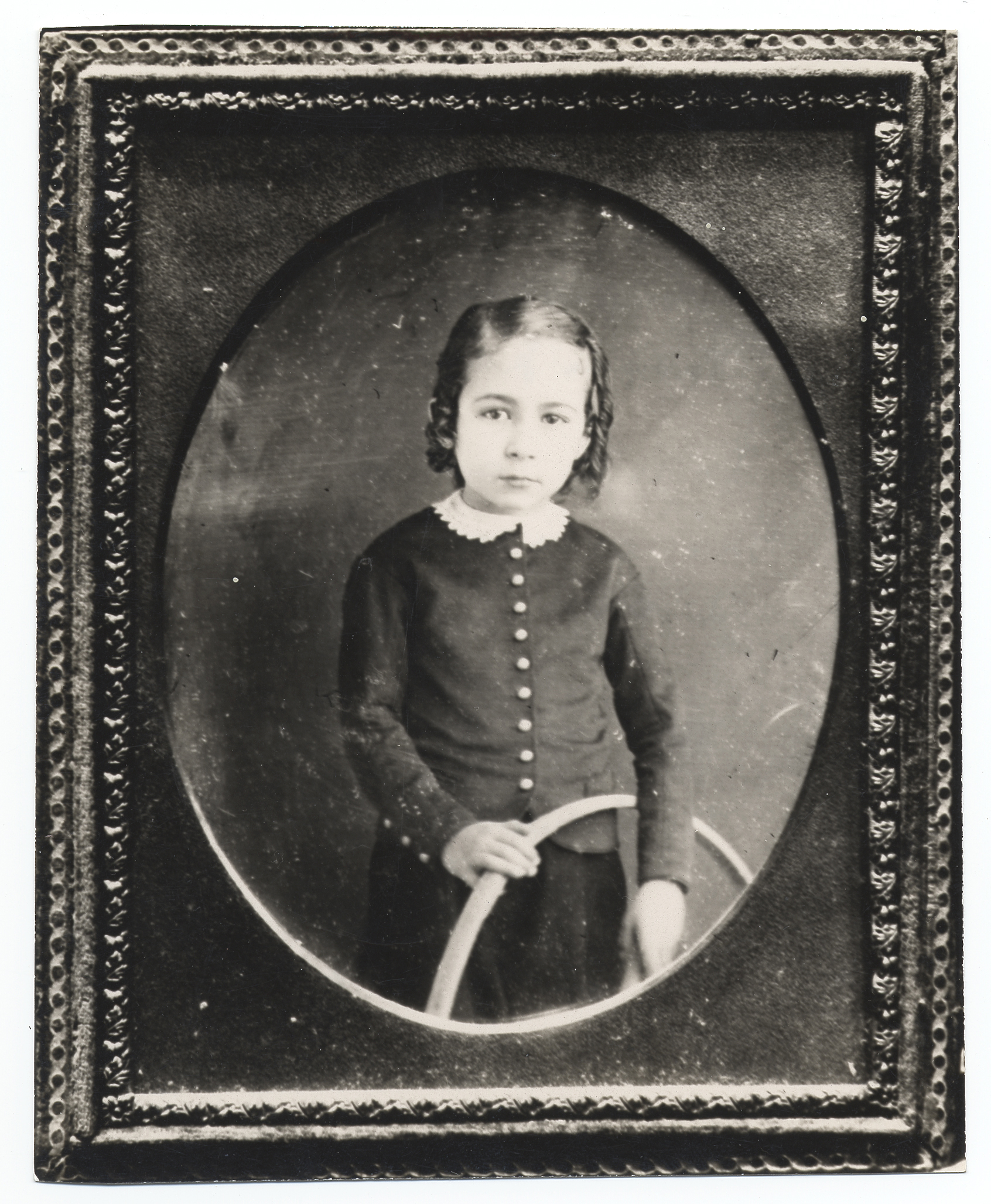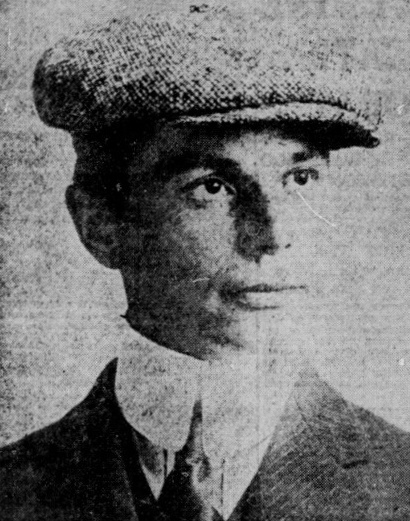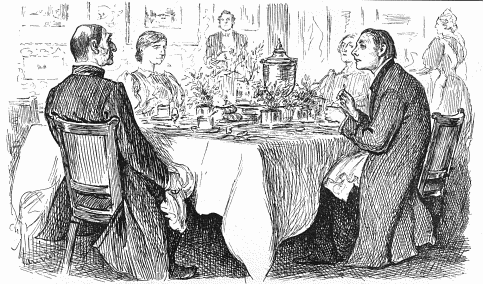|
Arthur Burdett Frost
Arthur Burdett Frost (January 17, 1851 – June 22, 1928), usually cited as A. B. Frost, was an American illustrator, graphic artist, painter and comics writer. He is best known for his illustrations of Brer Rabbit and other characters in the Joel Chandler Harris' Uncle Remus books. Frost's work is known for its dynamic representation of motion and sequence and for his realistic hunting, shooting and golfing prints. He illustrated over 90 books, produced hundreds of paintings and was a pioneer in the development of comic strips. He was admitted posthumously to the Society of Illustrators' Hall of Fame in 1985. Career Frost was born January 17, 1851, in Philadelphia, Pennsylvania, the eldest of ten children. His father, John Frost, was a historian, biographer and literature professor. At the age of fifteen, he worked as an intern at a local business that taught him engraving and lithography. He was mostly self taught but did study under Thomas Eakins at the Pennsylvania A ... [...More Info...] [...Related Items...] OR: [Wikipedia] [Google] [Baidu] |
Thomas Eakins
Thomas Cowperthwait Eakins (; July 25, 1844 – June 25, 1916) was an American realist painter, photographer, sculptor, and fine arts educator. He is widely acknowledged to be one of the most important American artists. For the length of his professional career, from the early 1870s until his health began to fail some 40 years later, Eakins worked exactingly from life, choosing as his subject the people of his hometown of Philadelphia. He painted several hundred portraits, usually of friends, family members, or prominent people in the arts, sciences, medicine, and clergy. Taken ''en masse'', the portraits offer an overview of the intellectual life of contemporary Philadelphia; individually, they are incisive depictions of thinking persons. In addition, Eakins produced a number of large paintings that brought the portrait out of the drawing room and into the offices, streets, parks, rivers, arenas, and surgical amphitheaters of his city. These active outdoor venues allo ... [...More Info...] [...Related Items...] OR: [Wikipedia] [Google] [Baidu] |
Charles Heber Clark
Charles Heber Clark (July 11, 1841 – August 10, 1915) was an American novelist and humorist. Most of his work was written under the pen name Max Adeler. Clark was also known by the pseudonym, John Quill. Biography Clark was born in Berlin, Maryland, the son of William J. Clark, an Episcopal clergyman whose abolitionist sympathies made short his stay in Southern parishes. Charles was educated at a school in Georgetown, D.C., and at the age of fifteen became an office boy in a Philadelphia commission house. During the American Civil War, he enlisted in the Union Army, and was discharged two years later at the close of the war. He then became a reporter for ''The Philadelphia Inquirer'', and within two months was promoted to editorial writer. Later he was dramatic and music critic of the ''Philadelphia Evening Bulletin'', and an editorial writer on the ''North American''. His was interested in economics, and he was a strong advocate of a high tariff. The bias led him to become ... [...More Info...] [...Related Items...] OR: [Wikipedia] [Google] [Baidu] |
Rudolph Dirks
Rudolph Dirks (February 26, 1877 – April 20, 1968) was one of the earliest and most noted comic strip artists, well known for ''The Katzenjammer Kids'' (later known as ''The Captain and the Kids''). Dirks was born in Heide, Germany, to Johannes and Margaretha Dirks. When he was seven years old, his father, a woodcarver, moved the family to Chicago, Illinois. After having sold various cartoons to local magazines Rudolph moved to New York City and found work as a cartoonist. His younger brother Gus soon followed his example. He held several jobs as an illustrator, which culminated in a position with William Randolph Hearst's ''New York Journal''. The circulation war between the ''Journal'' and Joseph Pulitzer's ''New York World'' was raging. The ''World'' had a huge success with the full-color Sunday feature, ''Down in Hogan's Alley'', better known as the ''Yellow Kid'', starting in 1895. Editor Rudolph Block asked Dirks to develop a Sunday comic based on Wilhelm Busch's caut ... [...More Info...] [...Related Items...] OR: [Wikipedia] [Google] [Baidu] |
Comic Book
A comic book, also called comicbook, comic magazine or (in the United Kingdom and Ireland) simply comic, is a publication that consists of comics art in the form of sequential juxtaposed panels that represent individual scenes. Panels are often accompanied by descriptive prose and written narrative, usually, dialogue contained in word balloons emblematic of the comics art form. "Comic Cuts" was a British comic published from 1890 to 1953. It was preceded by "Ally Sloper's Half Holiday" (1884) which is notable for its use of sequential cartoons to unfold narrative. These British comics existed alongside of the popular lurid "Penny dreadfuls" (such as "Spring-heeled Jack"), boys' " Story papers" and the humorous Punch (magazine) which was the first to use the term "cartoon" in its modern sense of a humorous drawing. The interweaving of drawings and the written word had been pioneered by, among others, William Blake (1757 - 1857) in works such as Blake's "The Descent Of Christ" ... [...More Info...] [...Related Items...] OR: [Wikipedia] [Google] [Baidu] |
Eadweard Muybridge
Eadweard Muybridge (; 9 April 1830 – 8 May 1904, born Edward James Muggeridge) was an English photographer known for his pioneering work in photographic studies of motion, and early work in motion-picture projection. He adopted the first name "Eadweard" as the original Anglo-Saxon form of "Edward", and the surname "Muybridge", believing it to be similarly archaic. Born in Kingston upon Thames, England, at the age of 20 he emigrated to the United States as a bookseller, first to New York City, and eventually to San Francisco. In 1860, he planned a return trip to Europe, and suffered serious head injuries in a stagecoach crash in Texas en route. He spent the next few years recuperating in Kingston upon Thames, where he took up professional photography, learned the wet-plate collodion process, and secured at least two British patents for his inventions. He returned to San Francisco in 1867, a man with a markedly changed personality. In 1868, he exhibited large photographs o ... [...More Info...] [...Related Items...] OR: [Wikipedia] [Google] [Baidu] |
Charles Dickens
Charles John Huffam Dickens (; 7 February 1812 – 9 June 1870) was an English writer and social critic. He created some of the world's best-known fictional characters and is regarded by many as the greatest novelist of the Victorian era.. His works enjoyed unprecedented popularity during his lifetime and, by the 20th century, critics and scholars had recognised him as a literary genius. His novels and short stories are widely read today. Born in Portsmouth, Dickens left school at the age of 12 to work in a boot-blacking factory when his father was incarcerated in a debtors' prison. After three years he returned to school, before he began his literary career as a journalist. Dickens edited a weekly journal for 20 years, wrote 15 novels, five novellas, hundreds of short stories and non-fiction articles, lectured and performed readings extensively, was an indefatigable letter writer, and campaigned vigorously for children's rights, for education, and for other social ... [...More Info...] [...Related Items...] OR: [Wikipedia] [Google] [Baidu] |
Mark Twain
Samuel Langhorne Clemens (November 30, 1835 – April 21, 1910), known by his pen name Mark Twain, was an American writer, humorist, entrepreneur, publisher, and lecturer. He was praised as the "greatest humorist the United States has produced", and William Faulkner called him "the father of American literature". His novels include ''The Adventures of Tom Sawyer'' (1876) and its sequel, ''Adventures of Huckleberry Finn'' (1884), the latter of which has often been called the " Great American Novel". Twain also wrote ''A Connecticut Yankee in King Arthur's Court'' (1889) and '' Pudd'nhead Wilson'' (1894), and co-wrote The Gilded Age: A Tale of Today (1873) with Charles Dudley Warner. Twain was raised in Hannibal, Missouri, which later provided the setting for ''Tom Sawyer'' and ''Huckleberry Finn''. He served an apprenticeship with a printer and then worked as a typesetter, contributing articles to the newspaper of his older brother Orion Clemens. He later became a river ... [...More Info...] [...Related Items...] OR: [Wikipedia] [Google] [Baidu] |
Photorealistic
Photorealism is a genre of art that encompasses painting, drawing and other graphic media, in which an artist studies a photograph and then attempts to reproduce the image as realistically as possible in another medium. Although the term can be used broadly to describe artworks in many different media, it is also used to refer specifically to a group of paintings and painters of the American art movement that began in the late 1960s and early 1970s. History Origins As a full-fledged art movement, Photorealism evolved from Pop ArtLindey (1980), pp. 27–33.Meisel and Chase (2002), pp. 14–15.Nochlin, Linda, "The Realist Criminal and the Abstract Law II", ''Art In America.'' 61 (November–December 1973), p. 98. and as a counter to Abstract Expressionism as well as Minimalist art movementsBattock, Gregory. Preface to Meisel, Louis K. (1980), ''Photorealism''. New York:Abrams. pp. 8–10 in the late 1960s and early 1970s in the United States. Photorealists use a photograph or ... [...More Info...] [...Related Items...] OR: [Wikipedia] [Google] [Baidu] |
Scribner's Magazine
''Scribner's Magazine'' was an American periodical published by the publishing house of Charles Scribner's Sons from January 1887 to May 1939. ''Scribner's Magazine'' was the second magazine out of the Scribner's firm, after the publication of ''Scribner's Monthly''. Charles Scribner's Sons spent over $500,000 setting up the magazine, to compete with the already successful ''Harper's Monthly'' and ''The Atlantic Monthly''. ''Scribner's Magazine'' was launched in 1887, and was the first of any magazine to introduce color illustrations. The magazine ceased publication in 1939. The magazine contained many engravings by famous artists of the 19th and early 20th centuries, as well as articles by important authors of the time, including John Thomason, Elisabeth Woodbridge Morris, Clarence Cook, and President Theodore Roosevelt. The magazine had high sales when Roosevelt started contributing, reaching over 200,000, but gradually lost circulation after World War I. History ''Scribne ... [...More Info...] [...Related Items...] OR: [Wikipedia] [Google] [Baidu] |
Punch (magazine)
''Punch, or The London Charivari'' was a British weekly magazine of humour and satire established in 1841 by Henry Mayhew and wood-engraver Ebenezer Landells. Historically, it was most influential in the 1840s and 1850s, when it helped to coin the term " cartoon" in its modern sense as a humorous illustration. From 1850, John Tenniel was the chief cartoon artist at the magazine for over 50 years. After the 1940s, when its circulation peaked, it went into a long decline, closing in 1992. It was revived in 1996, but closed again in 2002. History ''Punch'' was founded on 17 July 1841 by Henry Mayhew and wood-engraver Ebenezer Landells, on an initial investment of £25. It was jointly edited by Mayhew and Mark Lemon. It was subtitled ''The London Charivari'' in homage to Charles Philipon's French satirical humour magazine ''Le Charivari''. Reflecting their satiric and humorous intent, the two editors took for their name and masthead the anarchic glove puppet, Mr. Punch, of Punc ... [...More Info...] [...Related Items...] OR: [Wikipedia] [Google] [Baidu] |
Harper's Weekly
''Harper's Weekly, A Journal of Civilization'' was an American political magazine based in New York City. Published by Harper & Brothers from 1857 until 1916, it featured foreign and domestic news, fiction, essays on many subjects, and humor, alongside illustrations. It carried extensive coverage of the American Civil War, including many illustrations of events from the war. During its most influential period, it was the forum of the political cartoonist Thomas Nast. History Inception Along with his brothers James, John, and Wesley, Fletcher Harper began the publishing company Harper & Brothers in 1825. Following the successful example of ''The Illustrated London News'', Harper started publishing '' Harper's Magazine'' in 1850. The monthly publication featured established authors such as Charles Dickens and William Makepeace Thackeray, and within several years, demand for the magazine was great enough to sustain a weekly edition.Palmquist & Kailborn 2002, p. 279. In 1857, his ... [...More Info...] [...Related Items...] OR: [Wikipedia] [Google] [Baidu] |
Frederic Remington
Frederic Sackrider Remington (October 4, 1861 – December 26, 1909) was an American painter, illustrator, sculptor, and writer who specialized in the genre of Western American Art. His works are known for depicting the Western United States in the last quarter of the 19th century and featuring such images as cowboys, American Indians, and the US Cavalry. Early life Remington was born in Canton, New York, in 1861 to Seth Pierrepont Remington (1830–1880) and Clarissa (Clara) Bascom Sackrider (1836–1912). His paternal family owned hardware stores and emigrated from Alsace-Lorraine in the early 18th century. His maternal family, of French Basque ancestry, came to America in the early 1600s and founded Windsor, Connecticut. Remington's father was a Union army colonel in the American Civil War, whose family had arrived in America from England in 1637. He was a newspaper editor and postmaster, and the staunchly Republican family was active in local politics. The Remingto ... [...More Info...] [...Related Items...] OR: [Wikipedia] [Google] [Baidu] |








.jpg)
_(14579831590).jpg)